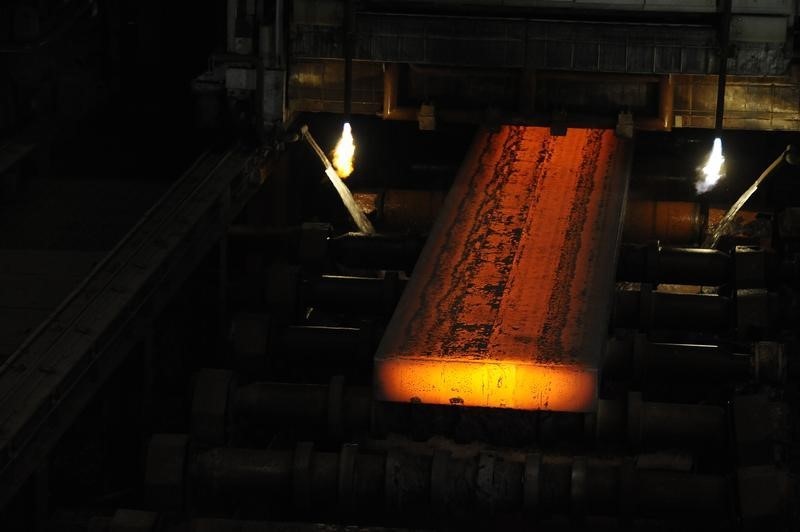(Bloomberg) -- Iron ore’s most spectacular collapse on record portends more volatility to come as investors grapple with a complex policy backdrop in China and an uneven recovery in global demand.
Once one of the hottest commodities in this year’s raw-material boom, iron ore’s ructions swiftly made it one of the most volatile. A brutal five-week rout for futures, and a 14% slump in the spot market on Thursday, has seen it lose about 40% of its value since May’s record as China seeks to reduce steel production to curb pollution.
Attention is now turning to an uncertain outlook for consumption, raising the prospect of more sharp, short-term moves. China’s demand is showing signs of faltering, though expectations are building that authorities may turn to infrastructure to help prop up the economy. And rising virus cases are weighing on growth in many parts of the world.
Benchmark spot ore with 62% iron content plunged 14% on Thursday, its biggest loss ever. Futures in Singapore rose 5.9% to $138.30 a ton on Friday following Thursday’s 12% slump, but remain near the lowest since December.
“We are massively bullish from these levels given the anticipated steel demand recovery once China overcomes the current Covid outbreak,” said Atilla Widnell, managing director at Navigate Commodities. “We see strong support for iron ore at $140 a ton and it actually looks incredibly oversold.”
The market is being buffeted by sometimes conflicting policies in China. Officials had turned to stimulus to boost growth, fueling demand for commodities key to infrastructure and property. At the same time, they sought to cut steel output and expectations for a flurry of restrictions saw mills front-load production to the first half.
That saw a swift run-up to a record for iron ore and steel, with the resulting inflationary pressures leading to a crackdown on commodities speculation, tighter credit and a moderation in spending on construction.
Market watchers are now trying to gauge the extent to which that lower consumption is reflected in prices. Morgan Stanley (NYSE:MS) said iron ore could fall further due to China’s weak steel demand, while Kallanish Commodities Ltd. analyst Tomas Gutierrez said iron ore is close to a bottom and a weak second half is priced in.
Slowdown
Still, faltering growth may underpin iron ore demand beyond this half if measures are needed to prop up the economy. China slowed more than expected in July as delta outbreaks added new risks to the recovery and boosted optimism the nation may turn to more monetary and fiscal stimulus to prevent a sharper slowdown.
“Steel demand will weaken in the second half along with a slowing property sector, but there is unlikely to be a big-sized drop, as the country has pledged to boost infrastructure investment to offset potential economic risks,” said Xu Xiangchun, who has been in the industry for over 30 years and is chief information officer at researcher Mysteel Global.
There’s also long-term supply constraints that are likely to underpin iron ore. Vale SA (NYSE:VALE) has been trying to recover output since a dam disaster more than two years ago, while Australian giant Rio Tinto (NYSE:RIO) Group has said it’s struggling to keep up with demand.
“Prices have now declined to a sustainable level,” said Rohan Kendall, Wood Mackenzie’s head of iron ore research. “The iron ore market remains susceptible to supply disruptions and short-term spikes in the iron ore price are likely.”
